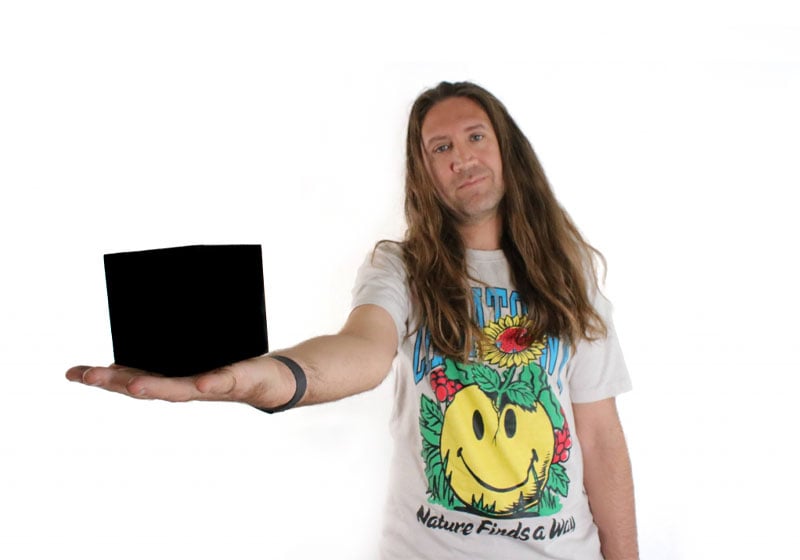Table of Contents
From Barbie Pink and Tiffany Blue to the famous Ferrari and Coca-Cola reds, colours are an essential part of certain brands’ identities. Businesses sometimes manages to secure the rights to (more or less) exclusive use of a particular hue: for example, nobody outside Mattel can use Barbie Pink when marketing a child’s toy without running into big legal trouble.
Today, however, we’d like to look at colours and brands from a completely different perspective. We’re going to tell the story of a British artist who, along with his collective, is fighting back, trying to ‘liberate’ colours from brands’ clutches. This has led to liberated Barbie Pink, the blackest black in the world (which anyone can buy except a certain ‘hated’ contemporary artist), a turquoise wrested back from Tiffany, an irreverent colour dedicated to Jeff Bezos and a blue freed from Calvin Klein.
These are Stuart Semple’s rebel colours: innovative materials that can also spark some very interesting reflections on the commercial use of colour!

Stuart’s passion for colour
Stuart Semple, the self-proclaimed Robin Hood of colour, was born in 1980 in Dorset, on the idyllic southern English coast. He is a leading figure in contemporary pop art and is particularly passionate about colours.
Apparently, his passion for painting all stems from one particular canvas: Vincent van Gogh’s Sunflowers. After discovering the impressive painting at the age of eight on a trip to London’s National Gallery, young Stuart started mixing whatever ingredients he could find at home – from food colouring to beetroot – to create his own paints.

Nor was this just a phase. Today, Stuart Semple is a well-established pop artist and, just as Renaissance painters experimented with new mixtures for their works of art, he too creates his own colours from scratch.
A series of fortuitous events then led Stuart to create increasingly distinctive colours: the pinkish pink in the world, the most ‘reflective’ hue in the world, the blackest black, the ‘most glittery’ glitter and many more.
The origins of the Robin Hood of colour and his arch nemesis
It all began in 2016 when Anish Kapoor, a British sculpture and one of the leading contemporary artists on the scene, decided to purchase the exclusive artistic usage rights to a specific type of black: Vantablack.

Vantablack was famous for being the blackest material in the world. It is so black that it looks almost completely flat, and is made from a microscopic lattice of tiny carbon rods that can trap 99.96% of light. Vantablack was originally designed for scientific and military purposes, and the fact that an artist had been granted its exclusive use in the art sector led to a series of protests from Anish Kapoor’s contemporaries.
Stuart Semple was one of the leading critics of the move. To get his revenge, Semple decided to create the pinkest pink in the world and to put it on sale on his site for just a few pounds. It can be bought by anyone, except for one person. Can you guess who? That’s right: Anish Kapoor!

Stuart Semple’s ‘liberated’ colours: from black to Barbie Pink!
After his work on the pinkest pink in the world, Stuart Semple developed a new obsession: creating the blackest black that would overtake Vantablack and remove the unfair advantage held by his nemesis.

Eventually, he started selling black 4.0, a paint that, according to the artist, can absorb all the light in both this and other universes (actually another colour overtook Vantablack for ‘blackness’ in 2019: the blackest black created by MIT researchers).
But Semple’s quest to democratise colours did not end here: his next target was the colours that had been ‘monopolised’ by brands. In 2023, with the help of his collective, he launched one of his most successful campaigns: the fight to liberate Barbie Pink. In July that year, just in time for the release of the acclaimed film, he started selling Pinkie – The Barbiest Pink, an ultra-fluorescent version of the iconic hue associated with the Mattel-branded doll.

Naturally, everyone can buy this colour… apart from Mattel. Similarly, in 2021 the British artist took on Tiffany Blue, the shade registered as a colour trademark in 1998 by the renowned New York-based luxury goods firm [you can read the whole Tiffany Blue story here]. Semple promoted his own version, Tiff Blue, in protest, denouncing the jewellery brand’s appropriation of the colour.

What right does an artist or brand have to take control a colour? That is what Stuart Semple is asking through his art.
Other targets of Semple’s incisive and colourful form of revenge include the blue patented by Calvin Klein, and Jeff Bezos, who had P-155 – an amber-coloured, water-based ink inspired by the… erm… ‘needs’ of Amazon employees – dedicated to him.
Stuart Semple’s witty and irreverent fight to free colour from the hands of big brands continues. What do you think his next target will be?

